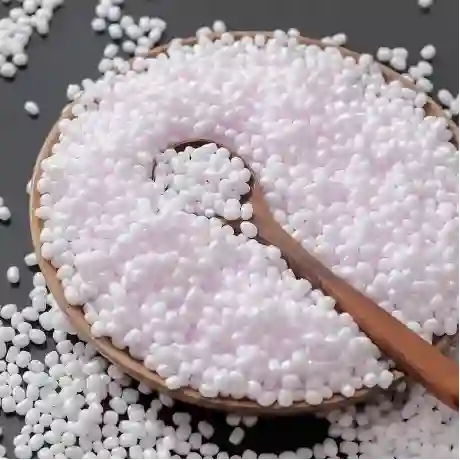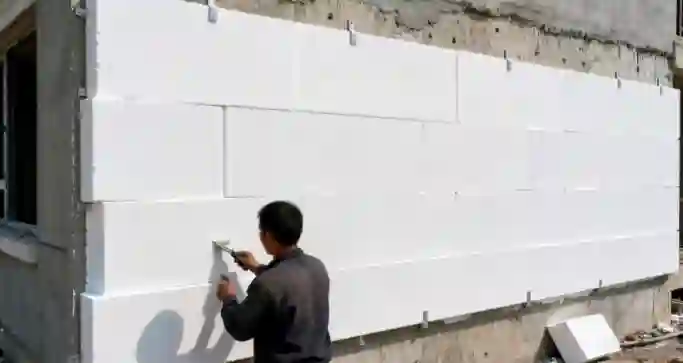Households commonly use polystyrene as a material which appears in packaging materials and food containers and insulation products. The light weight and large size of polystyrene creates difficulties when trying to dispose of it properly. Home compression of polystyrene reduces its size which helps with storage and recycling operations. The article investigates how polystyrene affects household waste while demonstrating the advantages of home compression and showing effective methods to accomplish it.

The Role of Polystyrene in Household Waste
Household waste accumulates significantly because polystyrene appears frequently in waste streams yet remains difficult to recycle through standard waste management systems.
What Is Polystyrene and Where It’s Commonly Found
Polystyrene, especially Expanded Polystyrene (EPS), is widely used in packaging, insulation, and disposable food containers due to its excellent cushioning and lightweight properties. P-extra light EPS suits vacuum forming machines, hydraulic presses, and large plate machinery, appearing in electrical and ceramic packaging, fishing and fruit boxes, buoys, and handicrafts.
Environmental Challenges Caused by Polystyrene Waste
Polystyrene serves practical purposes but creates major environmental problems. The substance remains in landfills for extended periods of hundreds of years because it does not decompose. The improper disposal of polystyrene results in its entry into water systems which then breaks down into dangerous microplastics that damage aquatic organisms. The current waste management infrastructure faces difficulties when dealing with polystyrene because of its light weight.
Why Traditional Disposal Methods Are Inefficient
The large volume of polystyrene takes up more space than its actual weight. The bulkiness of polystyrene creates high costs and inefficient operations for municipal waste transportation services. The bulkiness of EPS prevents it from being accepted by most curbside recycling programs because it pollutes other recyclable materials and needs special equipment for processing.
Benefits of Compressing Polystyrene at Home
The home-based compression of polystyrene provides multiple useful benefits to people who want to protect the environment.
Reducing Volume for Easier Storage and Transport
The main advantage of compression technology lies in its ability to decrease storage volume. The process of compressing EPS into dense blocks or sheets enables people to store larger amounts of waste within smaller areas. The process enables people to make fewer trips when moving the material to recycling facilities or designated drop-off locations.
Lowering Environmental Impact Through Waste Minimization
The process of compression enables recycling operations while simultaneously reducing environmental effects through decreased carbon emissions from transporting heavy waste materials. The reduced volume of waste requires fewer trucks to transport it which results in lower fuel usage for each waste unit.
Cost-Effective Waste Management for Households
Home compression provides families with an affordable method to handle their waste sustainably. The system helps people avoid regular waste collection services and special disposal costs while supporting environmentally friendly waste management.
Methods to Compact Polystyrene at Home
Homeowners have multiple methods to compress polystyrene based on their financial resources and the amount of material they require.
Manual Compression Techniques for Small-Scale Use
Households that produce limited amounts of EPS waste each week can use manual disposal methods.
Using Household Tools for Basic Compaction
Heavy books and clamps together with makeshift presses serve as basic tools for flattening small EPS items. People who work with polystyrene use hot wire cutters and heated surfaces (with proper safety measures) to transform the material into denser shapes.
Safety Tips During Manual Compression
When handling polystyrene manually:
- Always wear gloves to avoid cuts from sharp edges.
- If using heat-based methods like hot wires or melting tools, ensure proper ventilation as EPS fumes can be harmful.
- Keep children away from compression activities involving heat or sharp instruments.
Mechanical Solutions for Home Use
The mechanical compactor becomes a suitable option for people who handle large quantities of waste on a daily basis including small business operators and frequent online consumers.
Affordable Home-Use Polystyrene Compactors
The market offers different compactors which serve the needs of home users. The machines first break down EPS into smaller fragments before they transform into compact bricks or pellets which become more convenient for storage and recycling.
Energy Consumption and Maintenance Considerations
These machines work well but users need to evaluate their power requirements and upkeep requirements. Users need to clean their machines regularly because foam particles can cause clogs. Users should select equipment that provides both high performance and minimal power consumption for sustainable operation.

Choosing the Right Equipment for Home Compression
You should evaluate your requirements before purchasing home equipment for compressing polystyrene.
Size, Capacity, and Budget Constraints
Assess your monthly EPS production levels. Users who need occasional service can use compact machines with small hoppers but high-volume users require machines with larger hoppers.
Compatibility with Different Grades of Polystyrene
Your selected equipment needs to operate with B-Rapid prototyping grade and E-standard material and F-flame retardant grade material. The equipment requires specific handling of graphite-infused materials because different types have distinct density and structural characteristics which may cause jamming issues.
Where to Source Reliable Equipment and Tools
Choose eco-friendly suppliers offering adapted industrial recycling gear for home use. Check online sustainability sites for real customer reviews on product performance.
Safe Handling and Storage of Compressed Polystyrene
The correct handling process protects users while maximizing storage capacity until materials reach their recycling or disposal stage.
Proper Storage Techniques to Maximize Space Efficiency
Store compressed polystyrene blocks in vertical positions against walls while organizing them by type through bins that distinguish white EPS from black graphite materials. The practice of stacking blocks too high creates potential collapse risks that will develop into hazards with time.
Fire Safety and Material Handling Guidelines
The material needs flame retardant treatment to become non-flammable because FSH-European standard flame retardant grade materials containing retardants achieve B1-level fire resistance that meets GB8624 standards. The flame retardant grade meets Class B1 (GB8624-2012) standards and the finished panels and molded products demonstrate self-extinguishing fireproof properties.
Always:
- Store away from heat sources.
- Avoid direct sunlight exposure.
- Ensure good ventilation around storage areas.
Preparing Compressed Blocks for Recycling or Disposal
The recycling process requires you to label each block when possible because this information helps facilities sort materials properly. Check with your local recycling facility before bringing your materials because they might only accept clean white EPS without food residue or labels.
Recycling Options for Compressed Polystyrene
The process of home compression makes it simpler to discover suitable recycling facilities.
Local Recycling Programs That Accept Compressed Material
People should check their city public works department website for updates about EPS collection days and permanent drop-off locations that accept compressed foam blocks.
Partnering with Specialized Recycling Centers
Private recycling facilities accept compressed polystyrene waste when local government recycling programs do not take it. The facilities provide pickup services for large quantities of waste when you use mechanical compactors at home.
How Compression Facilitates Transportation and Processing
The transportation costs per kilogram decrease because compressed blocks require less space during movement. The transportation process becomes more efficient because compressed blocks require less space than loose foam. The majority of facilities need pre-compressed materials because they can directly insert these forms into pelletizers and reprocessing lines.
HUASHENG: A Trusted Supplier of High-Quality REPS Products
HUASHENG provides a wide range of products that serve industrial needs and support sustainable waste management solutions which help homeowners improve their waste disposal of polystyrene materials.
Common Grade REPS
The Common Grade consists of P-extra light material and B-Rapid prototyping grade and E-standard material which functions well for automatic molding machines to produce general packaging items such as fruit boxes and electrical components.
Flame Retardant Grade REPS
The FSH-European standard flame retardant grade serves as a flame retardant material which provides B1-level fire resistance according to the standard.
Graphite Grade REPS
S-33 achieved a 20% or greater improvement in thermal insulation performance through the addition of infrared absorbing graphite to polystyrenes.
Environmental Protection Grade REPS
The FHE-N-HBCD flame retardant grade contains non-HBCD agents which meet EU REACH regulatory requirements.
Carbon Black Grade REPS
The product range includes low thermal conductivity carbon black types which are best suited for applications requiring anti-static properties.
Customized Solutions Tailored to Specific Needs
HUASHENG provides R&D driven customization services to clients who need solutions for passive housing applications and other fields.

Conclusion
Compressing polystyrene at home simplifies waste management, reducing volume and environmental impact. With safe methods and reliable equipment from suppliers like HUASHENG, households can recycle efficiently, supporting sustainability and cost-effective disposal.
FAQs:
Q1: Is it possible to compress all types of polystyrene materials at home?
A: Lightweight white EPS used for packaging is most suitable for home compression. However, rigid graphite-infused polystyrene, like S-32 Graphite Grade, has high molecular weight and strong compression properties, requiring powerful mechanical compactors for effective handling.
Q2: Is it safe to compress polystyrene at home without professional equipment?
A: Yes, manual compression using proper weight-based methods is safe if done correctly. Never use open flames or uncontrolled heat sources, as these can produce toxic fumes. Follow safety tips to ensure a safe process.
Q3: What locations accept compressed polystyrene for recycling?
A: Local councils offer specific drop-off points for compressed polystyrene, and private recycling facilities accept clean, sorted compressed blocks. This method streamlines transportation by avoiding loose foam. Always check with the facility before delivery.






